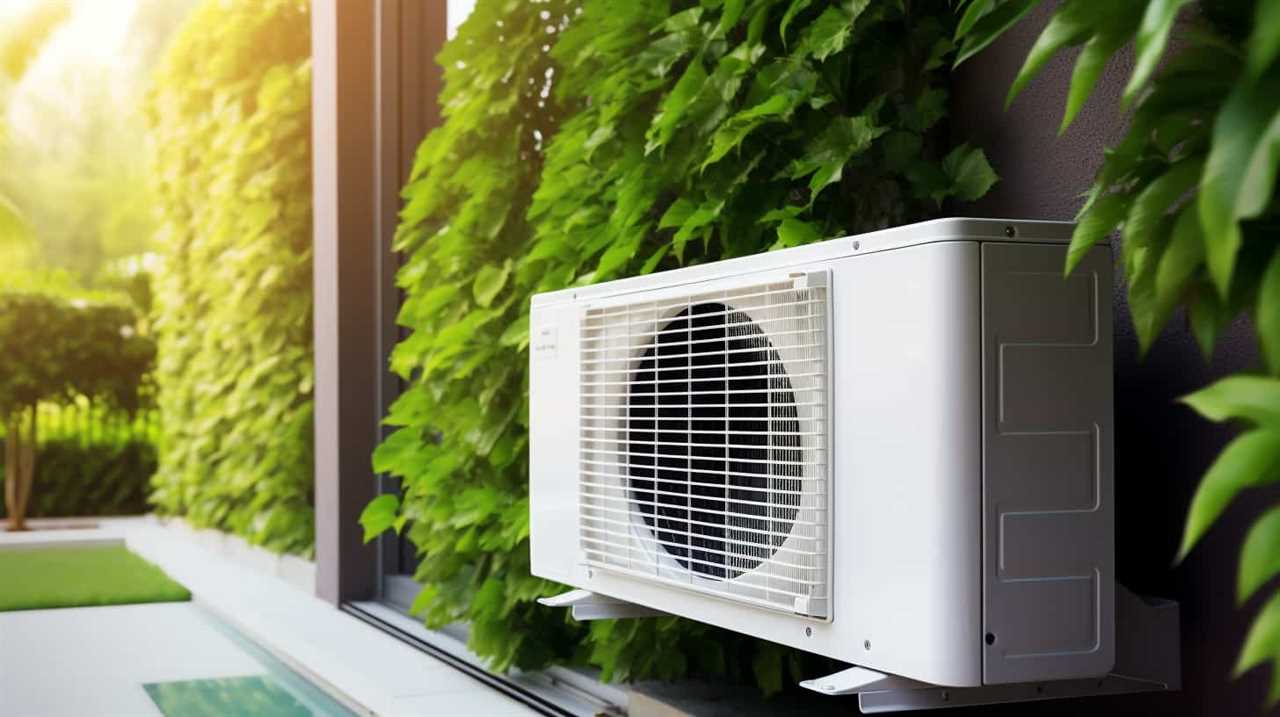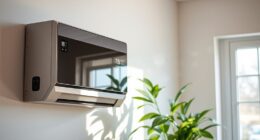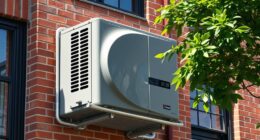Are you fed up with soaring energy costs and unsustainable construction methods? We have the answer for you.
In this article, we’ll show you how to design energy-efficient buildings using heat pumps. With our expert guidance, you’ll learn the key considerations and best practices for optimizing heat pump energy efficiency.
Say goodbye to inefficient designs and hello to sustainable, cost-effective solutions. It’s time to take control of your building’s energy consumption and join the movement towards a greener future.
Let’s get started!
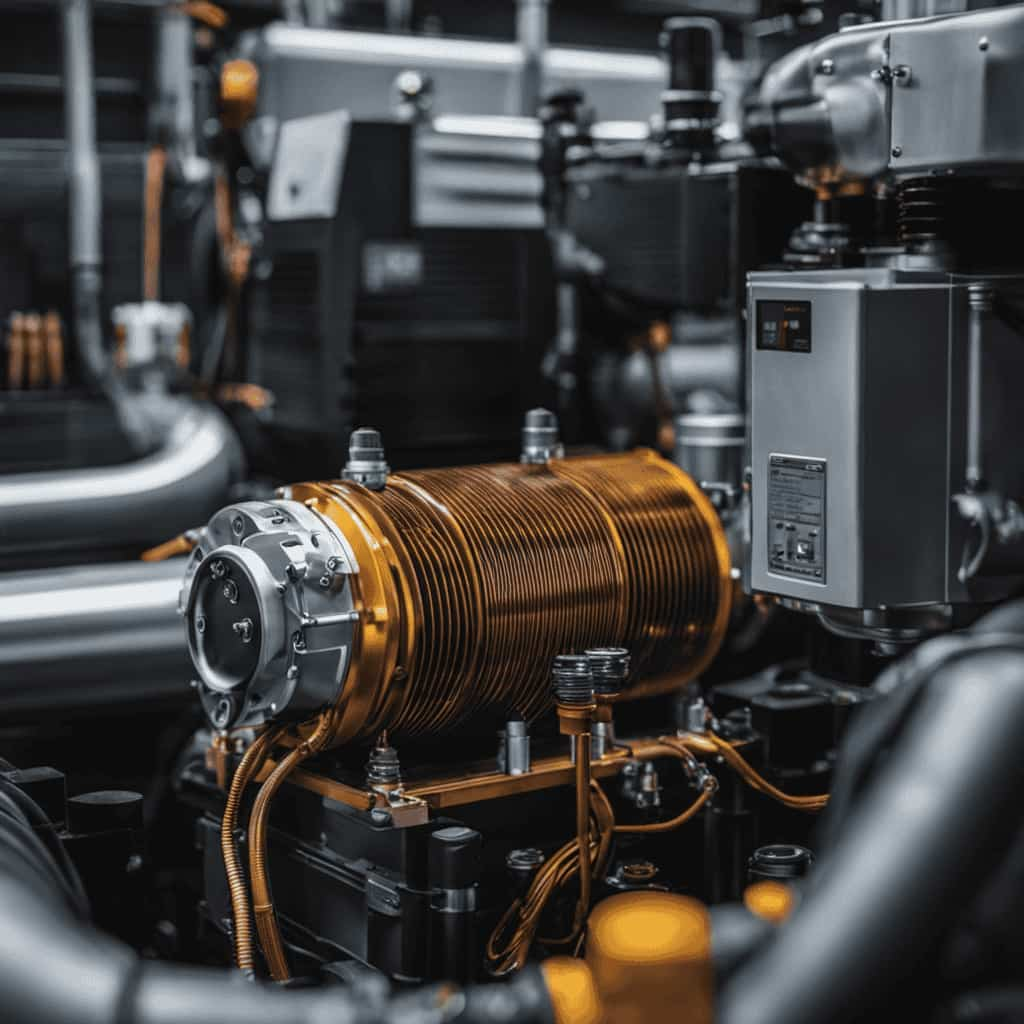
Key Takeaways
- Prioritize energy-efficient building design to reduce carbon footprint and optimize resource utilization.
- Heat pumps are more energy-efficient compared to traditional heating or cooling systems.
- Incorporate energy-efficient building materials and passive design strategies to minimize heat transfer and reduce the need for excessive heating or cooling.
- Integrate renewable energy sources, sustainable materials, and technologies to further reduce energy consumption and environmental impact.
The Importance of Energy-Efficient Building Design
We must prioritize energy-efficient building design in order to reduce our carbon footprint and optimize resource utilization. Energy saving techniques and the benefits of green building are crucial aspects of this design process.
By implementing energy saving techniques, such as proper insulation, efficient lighting systems, and smart HVAC systems, we can significantly reduce energy consumption and lower our environmental impact.
Green building practices not only contribute to a healthier environment but also provide numerous benefits, including reduced energy costs, improved indoor air quality, and increased property value.
Additionally, energy-efficient buildings can help mitigate the effects of climate change and promote sustainability.
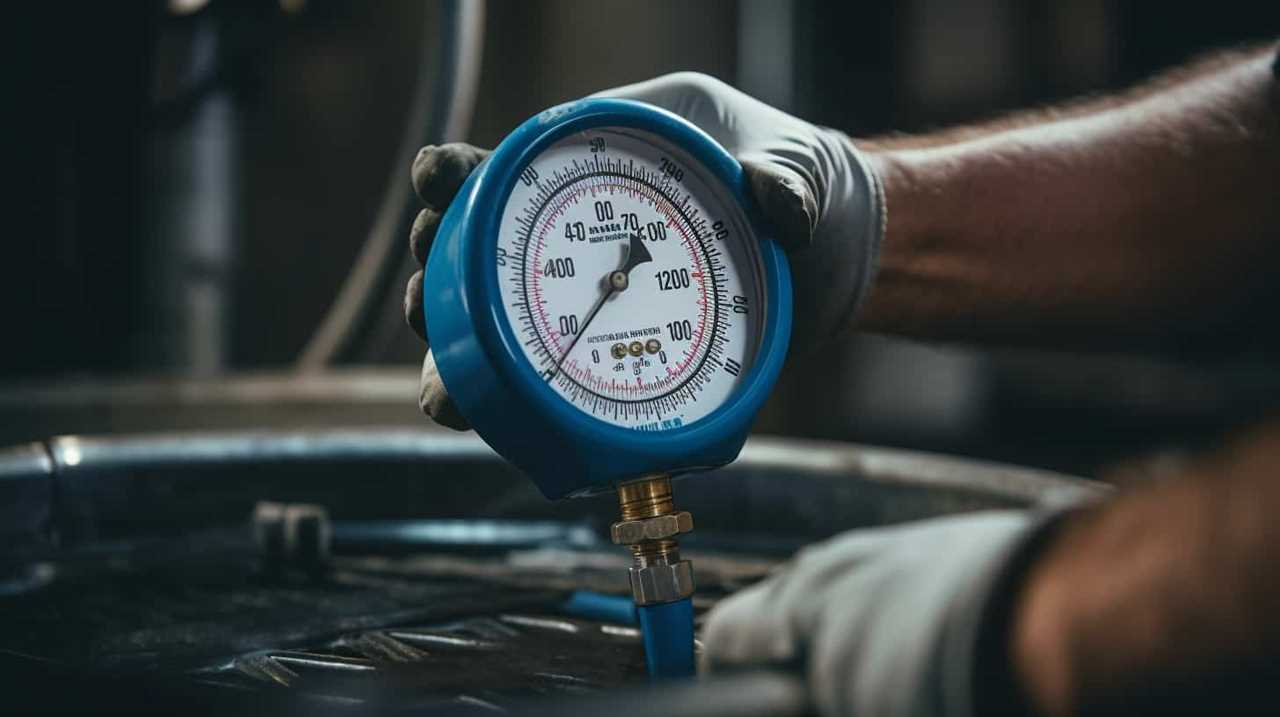
Understanding the importance of energy-efficient building design sets the foundation for comprehending the significance of heat pumps and their efficiency in achieving optimal energy utilization and environmental conservation.
Understanding Heat Pumps and Their Efficiency
To fully grasp the efficiency of heat pumps, it’s essential to understand how they work and the factors that affect their performance. Here are four key points to help you better understand heat pump functionality and installation:
-
Heat pumps work by transferring heat from one location to another, using refrigerant as the medium. They extract heat from the air, ground, or water source and transfer it to the desired space for heating, or vice versa for cooling.
-
The efficiency of a heat pump is measured by its coefficient of performance (COP). The higher the COP, the more efficient the heat pump is at providing heating or cooling.
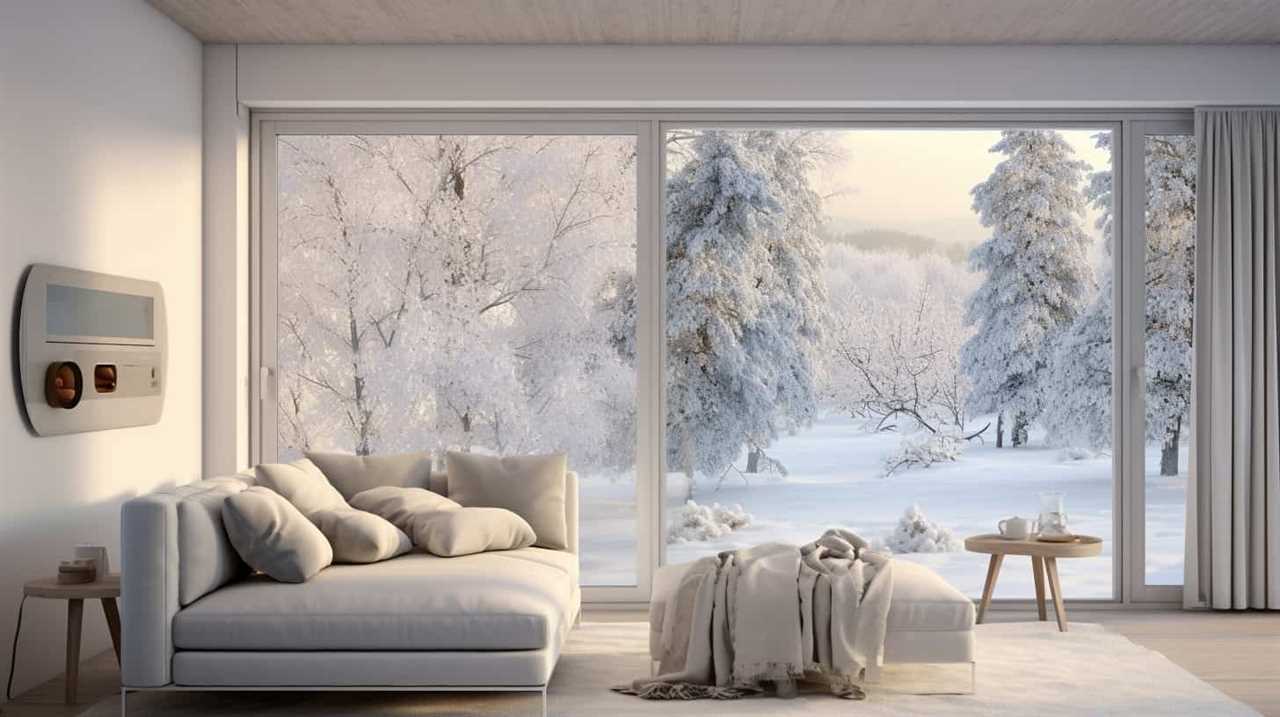
-
The location and size of the heat pump, as well as the quality of the insulation and ductwork, can greatly impact its efficiency. Proper installation and regular maintenance are crucial for optimal performance.
-
Heat pumps can be more energy-efficient compared to traditional heating or cooling systems, as they can provide both heating and cooling functions. This versatility helps reduce energy consumption and costs.
Understanding heat pump functionality and considering proper installation techniques are essential for designing energy-efficient buildings.
Key Considerations for Designing Energy-Efficient Buildings
Considering the overall energy consumption and long-term sustainability, designing energy-efficient buildings requires careful consideration of various factors.
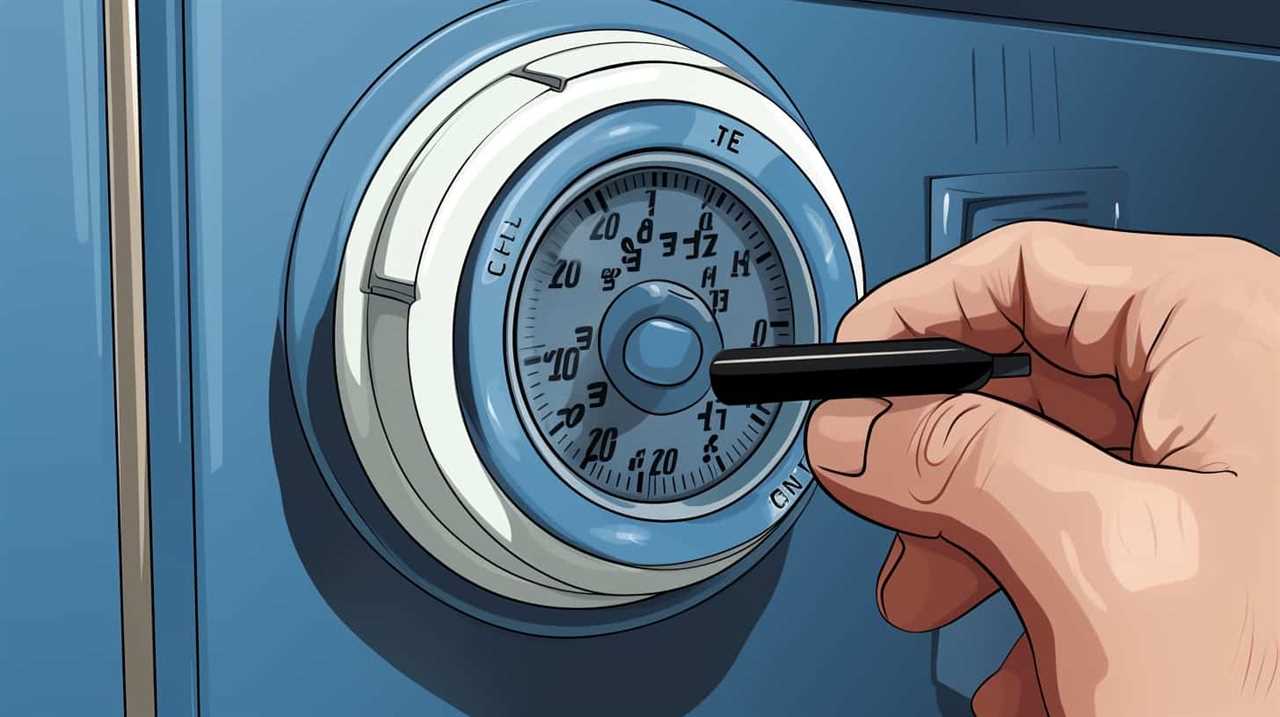
To achieve maximum efficiency, it’s crucial to incorporate energy-efficient building materials and passive design strategies. Energy-efficient building materials, such as high-performance insulation, low-emissivity windows, and reflective roof coatings, minimize heat transfer and reduce the need for excessive heating or cooling. Passive design strategies, such as proper orientation, shading, and natural ventilation, harness natural elements to optimize thermal comfort and reduce energy consumption.
By designing buildings that utilize these strategies and materials, we can significantly decrease energy usage and contribute to a more sustainable future.
In the subsequent section, we’ll explore the importance of incorporating sustainable materials and technologies in building design, further enhancing energy efficiency and environmental responsibility.
Incorporating Sustainable Materials and Technologies in Building Design
Regularly incorporating sustainable materials and technologies in building design can significantly enhance energy efficiency and environmental responsibility.
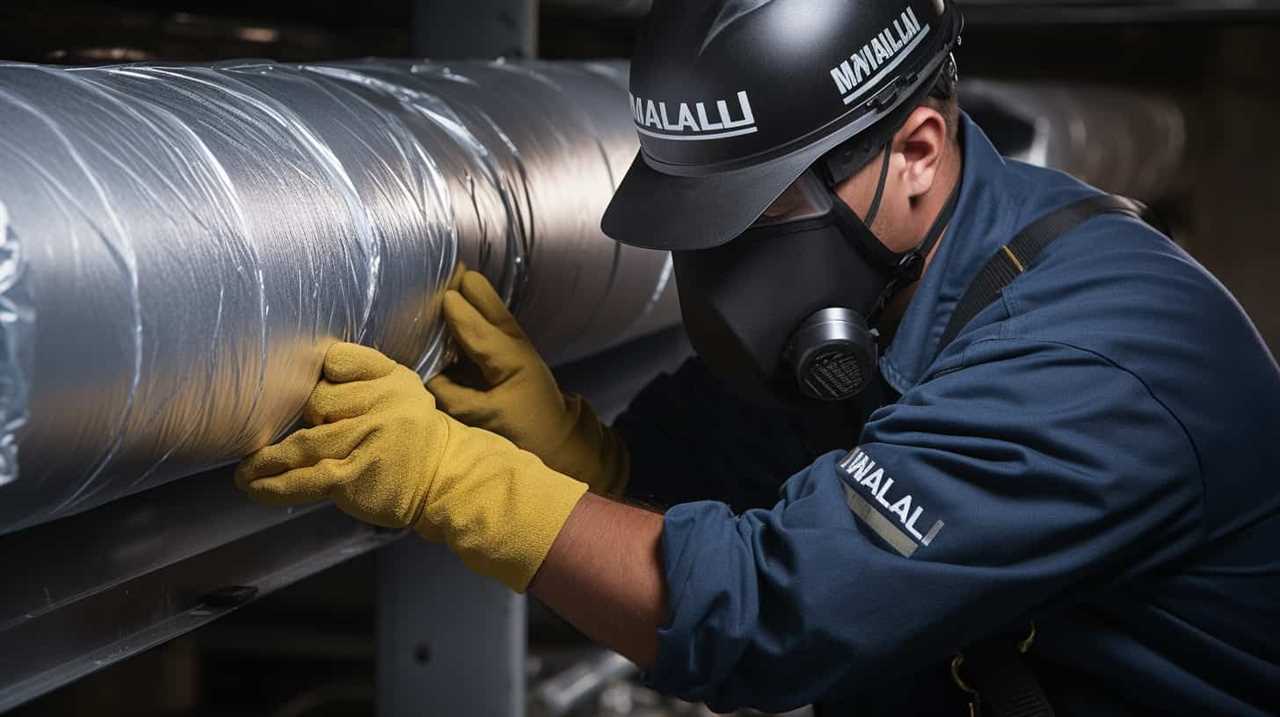
By integrating renewable energy sources in building design, such as solar panels or wind turbines, buildings can generate their own clean energy, reducing dependence on fossil fuels.
Passive cooling techniques, such as natural ventilation and shading, can also be incorporated to minimize the need for energy-intensive air conditioning systems.
Additionally, sustainable materials like recycled steel, bamboo, or reclaimed wood can be used to reduce the environmental impact of construction.
These practices not only contribute to lower energy consumption and greenhouse gas emissions, but also promote a healthier and more sustainable built environment.
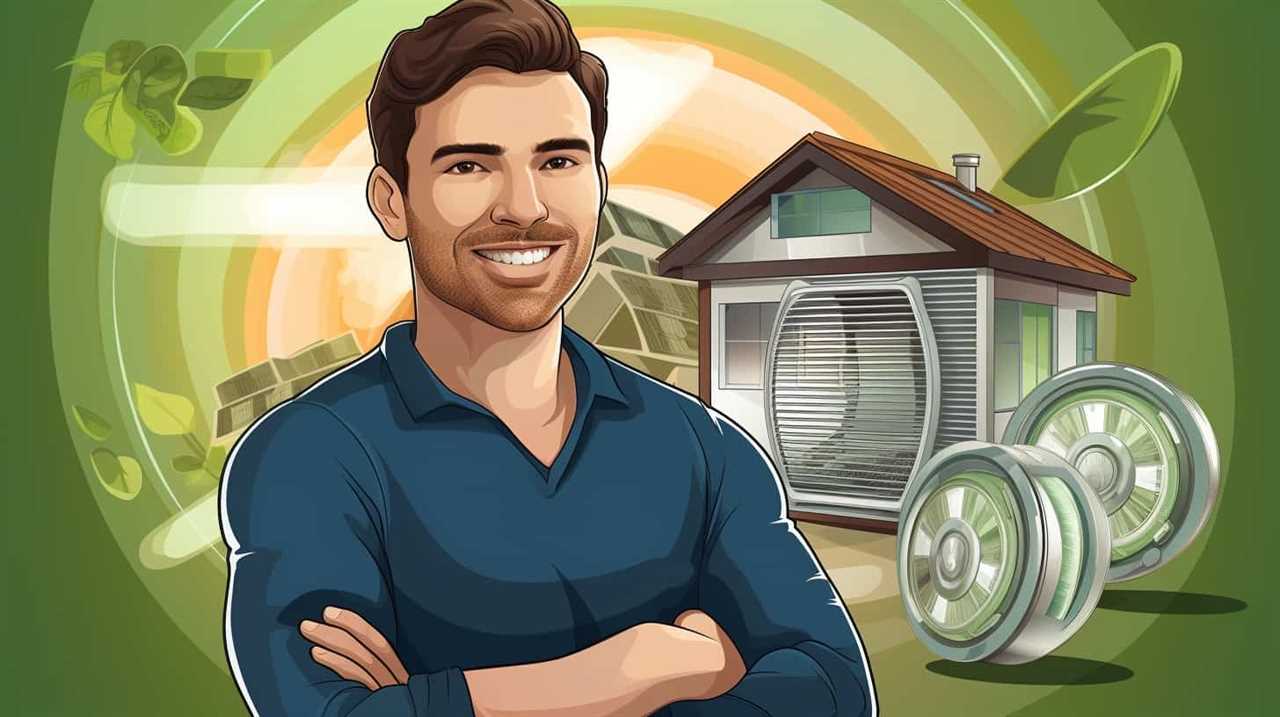
As we move forward, it’s important to explore the best practices for optimizing heat pump energy efficiency.
Best Practices for Optimizing Heat Pump Energy Efficiency
We can maximize heat pump energy efficiency by properly sizing and selecting the right heat pump system for our building. Additionally, there are other best practices that we can follow to optimize the energy efficiency of our heat pump system. One key aspect is building insulation, which plays a crucial role in reducing heat loss or gain and maintaining a stable indoor temperature. By investing in high-quality insulation materials and ensuring proper installation, we can minimize the workload on the heat pump and improve its efficiency. Another important practice is the integration of renewable energy sources with the heat pump system. By harnessing solar or wind energy, we can reduce the reliance on traditional energy sources and further enhance the energy efficiency of the heat pump.
To summarize these best practices, refer to the table below:
| Best Practice | Description |
|---|---|
| Proper sizing | Ensure the heat pump system is properly sized for the heating and cooling load. |
| Building insulation | Install high-quality insulation materials to reduce heat loss or gain. |
| Renewable energy integration | Incorporate renewable energy sources to supplement the heat pump’s energy supply. |
Frequently Asked Questions
What Are the Potential Drawbacks or Limitations of Using Heat Pumps in Energy-Efficient Building Design?
Potential drawbacks and limitations of heat pumps in energy-efficient building design include high upfront costs, reliance on electricity, and the need for adequate space for installation. However, with proper planning and design, these challenges can be mitigated.
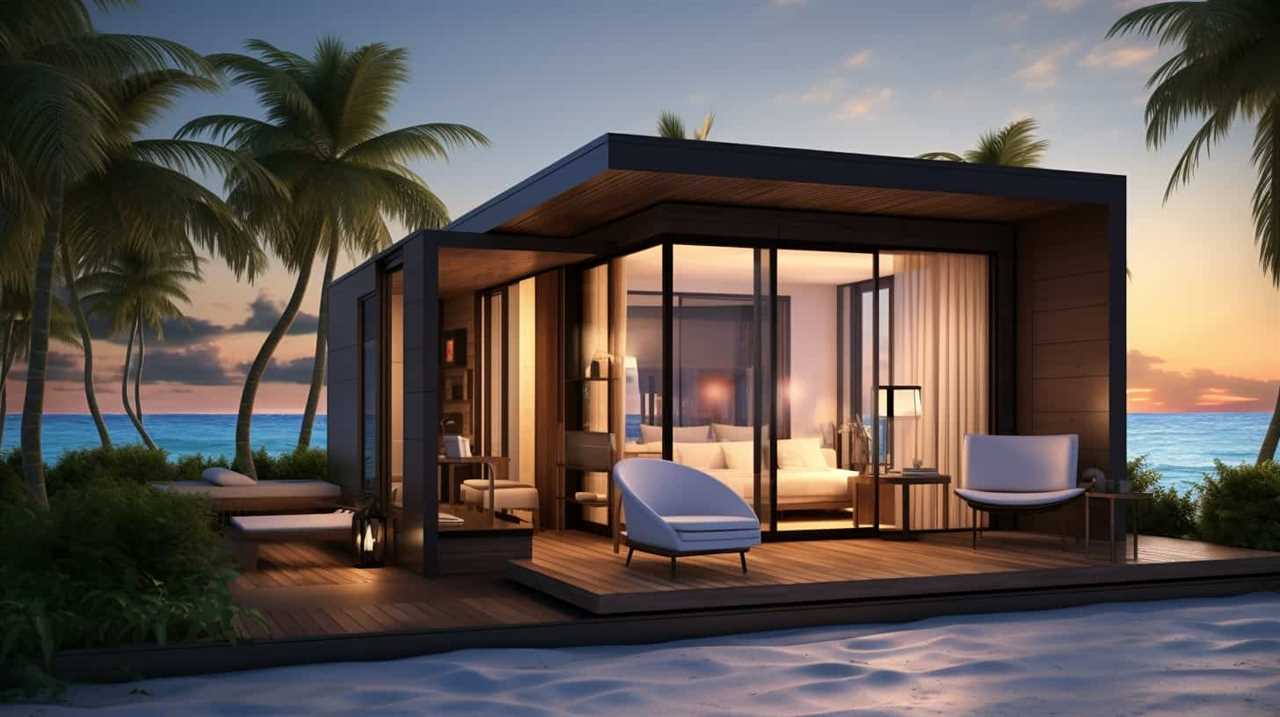
Are There Any Specific Regulations or Building Codes That Need to Be Considered When Incorporating Heat Pumps Into Energy-Efficient Building Design?
When it comes to incorporating heat pumps into energy-efficient building design, it’s crucial to keep in mind the various regulations and building codes that need to be followed. These guidelines ensure safety and compliance with industry standards.
Can Heat Pumps Be Used Effectively in All Types of Climates and Geographical Locations?
Heat pump effectiveness is dependent on climate and geographical location. Factors such as temperature, humidity, and seasonal variations impact their performance. Proper design and sizing are crucial for optimal efficiency and energy savings.
What Maintenance or Servicing Requirements Are Associated With Heat Pumps in Energy-Efficient Building Design?
Maintenance and servicing requirements for heat pumps in energy-efficient building design are crucial. Regular upkeep is essential to ensure optimal performance and longevity. Neglecting these requirements can result in decreased efficiency and costly repairs.
Are There Any Financial Incentives or Government Programs Available to Support the Use of Heat Pumps in Energy-Efficient Building Design?
Financial incentives and government programs are available to support the use of heat pumps in energy-efficient building design. These incentives can help offset the initial costs and promote the adoption of this sustainable technology.
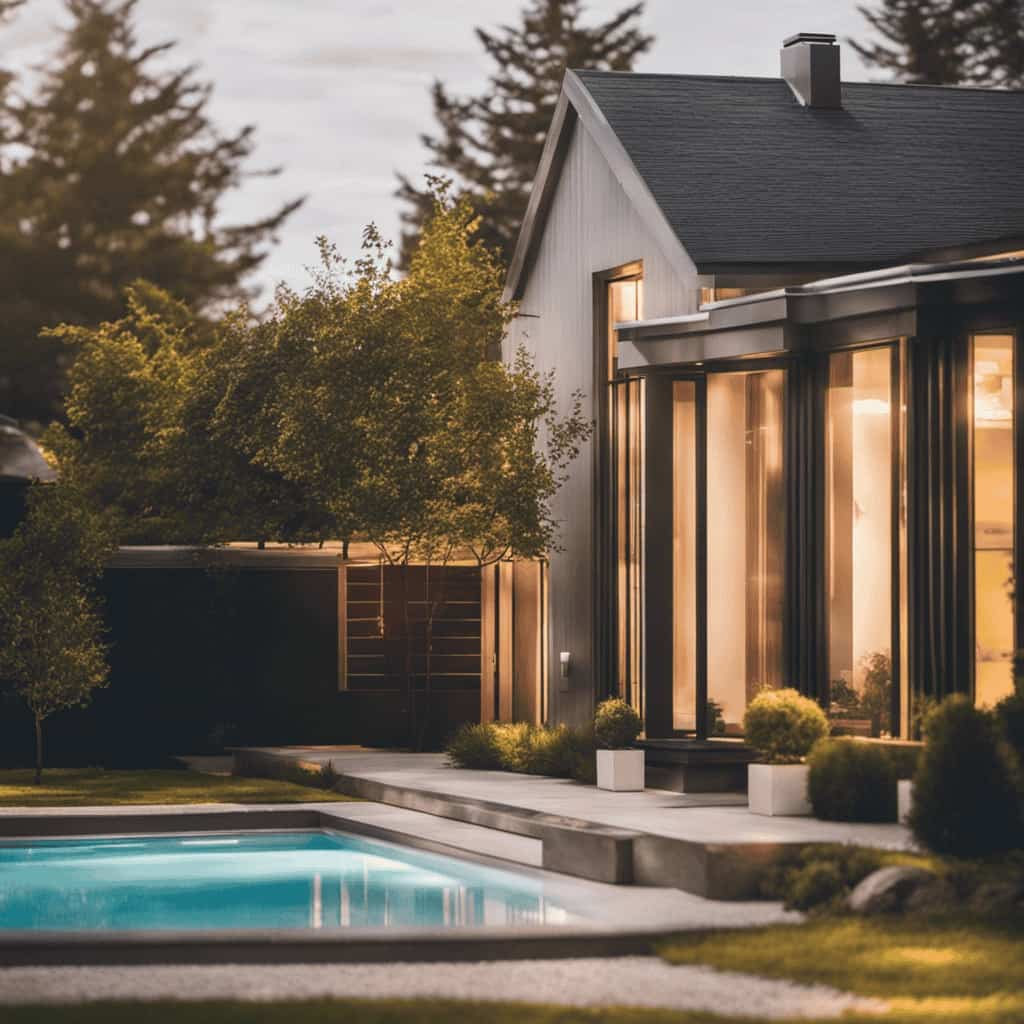
Conclusion
In conclusion, designing energy-efficient buildings with heat pumps is crucial in reducing energy consumption and promoting sustainability.
By understanding the efficiency of heat pumps and considering key factors in building design, such as insulation and ventilation, we can optimize energy efficiency.
Furthermore, incorporating sustainable materials and technologies further enhances the overall efficiency of heat pump systems.
By following these best practices, we can create buildings that are both environmentally friendly and cost-effective in the long run.
